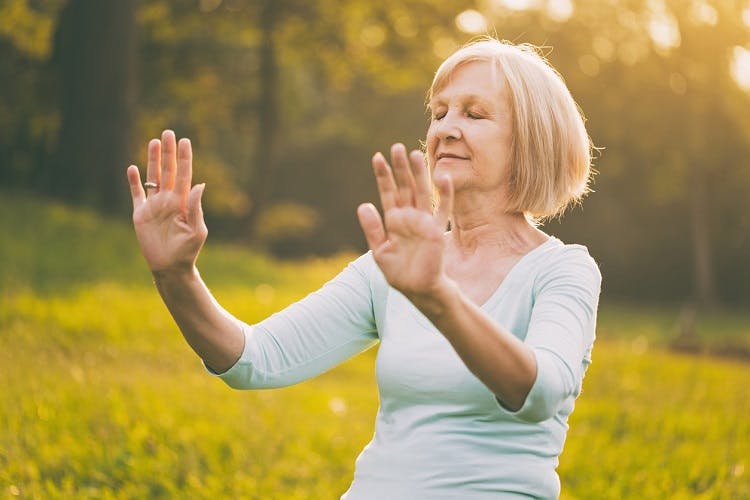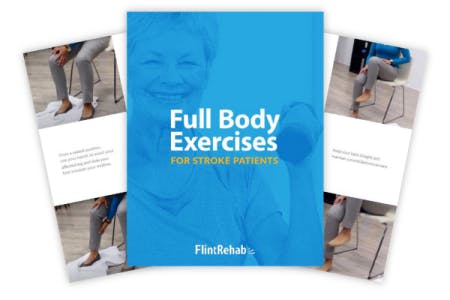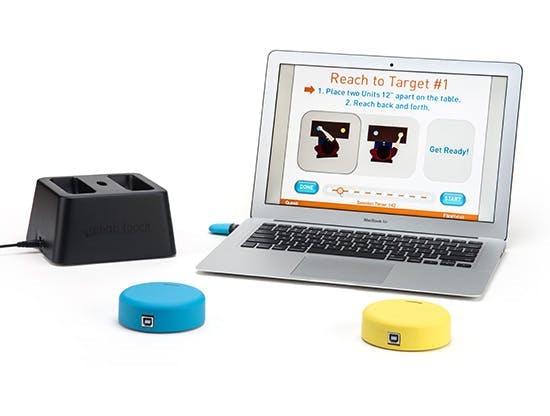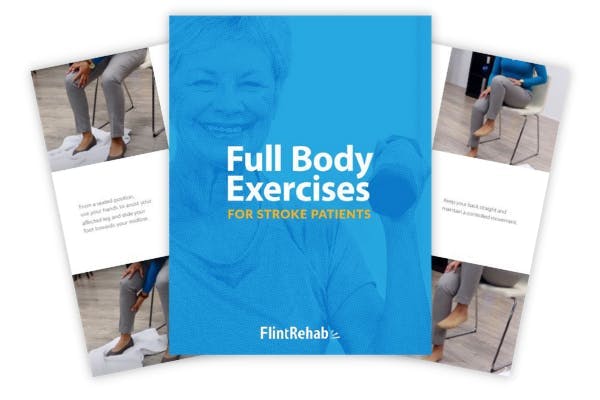No products in the cart.
No products in the cart.
No products in the cart.
No products in the cart.
Home » Neurological Recovery Blog » Stroke » Stroke Exercise » Tai Chi for Stroke Recovery Offers Big Benefits
Last updated on April 17, 2024

Practicing Tai Chi may be an effective way to promote recovery after stroke. Tai Chi for stroke recovery offers a low-impact and low-to-moderate intensity form of exercise, which provides physical and mental benefits that improve the quality of life after a stroke.
This article describes the benefits of practicing Tai Chi for stroke recovery and provides some Tai Chi exercises you can practice at home.
Tai Chi is a centuries-old form of gentle exercise that combines physical movements with relaxation. It cultivates a balance between the mind and body, which makes it ideal for stroke recovery.
Tai Chi Stroke Recovery includes a series of slow continuous motions, some of which concentrate on capturing the strength and spirit of various animals (i.e., tiger, ape, stag, bear, crane). These movements promote the flow of energy throughout the body.
By focusing on balance, body alignment, and mindfulness, individuals may achieve a greater sense of control, stability, and relaxation. Additionally, Tai Chi is easily modified so that individuals with weakness after stroke can benefit through participation. For example, movements performed from a seated position allow for greater stability.
In the following section, we’ll discuss the benefits of Tai Chi for stroke survivors.
Practicing Tai Chi after a stroke may provide a wide range of physical and mental benefits. Many individuals experience weakness or paralysis after a stroke, which increases their risk of falling due to poor balance. Tai Chi is ideal for improving balance as it emphasizes slow, controlled, and repetitive movements that originate from the center of the body.
Further, because it encourages continuous movement, Tai Chi promotes dynamic movement more than traditional exercise programs and generally improves dynamic standing balance. The benefits of Tai Chi stroke recovery may come from the unique combination of slow, controlled movements paired with relaxation techniques.
Benefits of Tai Chi [1],[2],[3] for stroke survivors include:
Now that you understand what Tai Chi is and how it can benefit stroke survivors let’s go over some Tai Chi exercises you can practice at home.
Are you interested in trying Tai Chi for recovery after stroke?
Below are some of our favorite Tai Chi for stroke recovery exercises:
Start in a standing position with your legs hip-width apart and knees slightly bent. Then, float your hands up and down in front of your body with your arms shoulder-width apart, palms down, and hands 3-6 inches apart. As you do this, visualize yourself moving a ball of energy up and down with your hands.
Then, visualize yourself carrying that big ball of energy (about the size of a large medicine ball) right in front of your torso. While using your arms to carry that ball of energy, pivot your torso to move the ball around in front of you in the shape of an infinity sign (a sideways figure 8).
As you move the imaginary ball to your right, rotate your torso to the right as well. Then, repeat on the left side. Keep in mind that this exercise strengthens your core and entire body, not just your arms.
Move slowly and intentionally as you swirl this energy around the front side of your body. Every motion is the same speed as if you are in slow motion.
While smoothly transitioning from the exercise above, take that ball of energy and bring it up in front of your face. Move this energy in an arc from side to side, like a rising and setting sun. This posture is used as a transition movement for other exercises.
For this movement, imagine there is a big bucket of water in front of you. With a wide stance, or seated, begin with your right arm out away from your body with palm down. Now, move the hand down and imagine you are scooping up water and raise your hand full of water to the level of your chest. Make a big, slow, circular motion as you scoop the water. Then, look at your palm as you bring it across the front of your face and back over to your right side, bringing it down, letting the water fall to the floor.
This movement should feel like one big circular movement for your right arm. Repeat on your left side, and perform 4 repetitions of this Scooping Water movement on each side. Follow this video for more explanation.
Now, imagine that there’s a ball of energy on your right shoulder. Pivot your torso and slightly turn to your right as you use your left arm to roll the ball down your shoulder and arm.
While you’re still facing your right side, shift your weight into your left leg and bring your hands out to your sides. Shifting your weight from one side to the other in a one-third to two-thirds ratio will help you remain grounded.
Shift forward to your right side to complete the movement. Then, transition to your left side while performing a Rising Sun on your way. Remember to move slowly and fluidly.
Remember, it is the fluidity of these movements that matters. You may find participating with a friend or following a video like this one can be helpful.
Be aware of your breath as you perform these movements. Inhale as you shift back and spread your wings, and exhale as you shift forward. During these exercises maintain an ease, fluidity, and softness in your body.
Tai Chi is an ancient Chinese practice that utilizes graceful and continuous movements for therapeutic relief. It is a low-impact form of exercise that may improve balance and prevent falls, which makes it ideal for stroke survivors who have weakness or paralysis.
Likewise, Tai Chi also promotes relaxation and improved focus. We hope you try these Tai Chi for stroke recovery exercises to restore a sense of balance between your body and mind.

Get our free ebook filled with 25 pages of rehab exercises featuring photos of licensed therapists. Sign up below to get your copy!
When you sign up, you’ll also receive our popular Monday newsletter that contains 5 articles on stroke recovery.
We never sell your email address, and we never spam. That we promise.


Do you have these 25 pages of rehab exercises?
Get a free copy of our ebook Full Body Exercises for Stroke Patients. Click here to get instant access.
“When my 84-year-old Mom had a stoke on May 2, the right side of her body was rendered useless. In the past six months, she has been blessed with a supportive medical team, therapy team, and family team that has worked together to gain remarkable results.
While she still struggles with her right side, she can walk (with assistance) and is beginning to get her right arm and hand more functional. We invested in the FitMi + MusicGlove + Tablet bundle for her at the beginning of August.
She lights up when we bring it out and enjoys using it for about 20 to 30 minutes at a time. While she still doesn’t have enough strength to perform some of the exercises, she rocks the ones she can do! Thanks for creating such powerful tools to help those of us caring for stroke patients. What you do really matters!”
-David H.
FitMi is a neurorehab device that you can use from the comfort of home. It works by motivating you to accomplish high repetition of therapeutic exercises.
As you work through the program, you’ll unlock more difficult exercises when you’re ready. It’s like having a virtual therapist available anytime you need it.
See how quickly Sudhir was able to notice improvements:
“I bought FitMi about a month and a half ago. Quite impressed with the range of exercises for hand, arm, leg and foot. I suffered a stroke about 2 years ago which paralyzed my right side. I do walk now with a cane or walker, but my right hand curls up and my right arm is also weak. Within a few days of trying it out, I could note a distinct improvement in stamina before tiring. So, I am looking forward to continued improvement.”
-Sudhir
Not only is FitMi approved by survivors, but it’s also approved by therapists, too. FitMi is used in some of the top clinics in the world, including the Shirley Ryan Ability Lab, the #1 ranked rehab hospital in America. Plus, two PTs on YouTube with over 3 million subscribers (you may know them as Bob & Brad) gave FitMi the thumbs up, too.
To learn more about this motion-sensing, game-changing recovery tool, click the button below:
Grab a free rehab exercise ebook!
Sign up to receive a free PDF ebook with recovery exercises for stroke, traumatic brain injury, or spinal cord injury below: